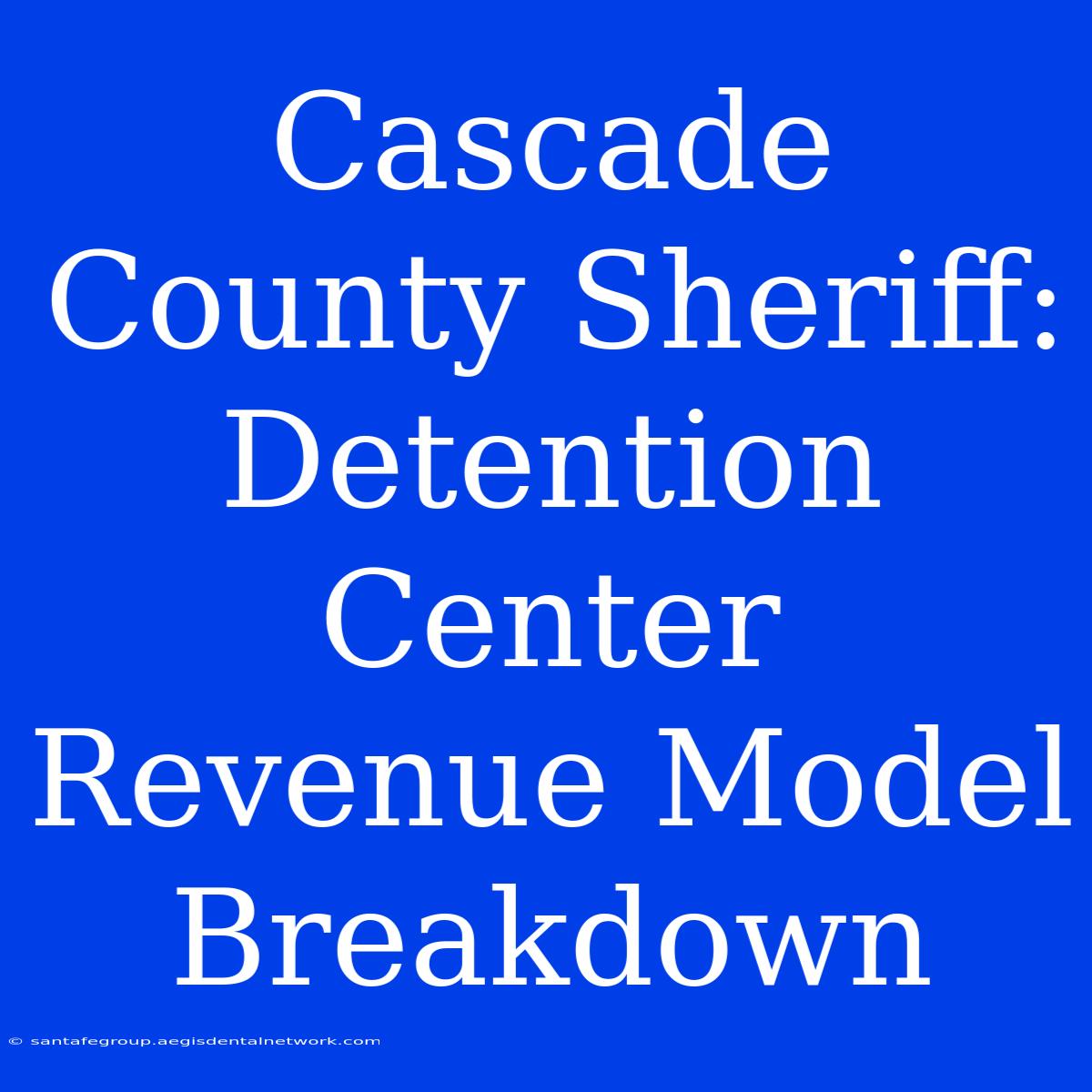Cascade County Sheriff: Detention Center Revenue Model Breakdown - Unveiling the Financial Landscape of Jail Operations
Is the Cascade County Detention Center financially sustainable? This question is crucial for understanding the local government's ability to maintain effective law enforcement and public safety.
Editor Note: This article examines the Cascade County Detention Center's revenue model, delving into the various income streams and their impact on the facility's financial stability.
Why This Matters: With the increasing costs of running a detention center, understanding its revenue model is vital for ensuring its long-term viability. It allows for informed discussions on budget allocation, policy decisions, and the impact on local taxpayers.
Our Analysis: This article analyzes the Cascade County Detention Center's financial structure, exploring key revenue sources such as inmate fees, state and federal reimbursements, and county allocations. We also examine the impact of population trends, crime rates, and legislative changes on the center's revenue generation.
Key Financial Insights:
| Revenue Source | Description | Impact on Sustainability |
|---|---|---|
| Inmate Fees | Charges levied for services like phone calls, commissary purchases, and bail bonds. | Can contribute significantly to operational costs, but subject to limitations based on inmate socioeconomic factors. |
| State & Federal Reimbursements | Funding received for specific programs or inmates, like those with mental health needs. | Provides vital support, but reliant on evolving government policies and budget allocations. |
| County Allocations | Direct funding from the county's general budget. | Critical for covering core operational expenses, subject to competition from other county services. |
Cascade County Detention Center Revenue Model Breakdown
Inmate Fees
The detention center generates revenue through fees charged to inmates for various services. These fees can cover a range of expenses like:
- Phone Calls: Charges for inmate phone calls to maintain communication with family and legal counsel.
- Commissary Purchases: Revenue generated from the sale of food, hygiene products, and other items to inmates.
- Bail Bonds: Fees charged for securing the release of inmates pending trial.
- Other Services: Revenue from additional services like photocopying, visitation fees, and inmate mail handling.
The impact of inmate fees on the detention center's revenue model is significant. However, it's crucial to consider the potential limitations:
- Inmate Socioeconomic Factors: Many inmates face financial hardship, limiting their ability to pay for these services.
- Ethical Considerations: Some argue that charging inmates for basic necessities raises ethical concerns about their human rights.
- Transparency and Oversight: Transparency in fee structures and revenue utilization is essential to maintain public trust.
State and Federal Reimbursements
The detention center receives funding from state and federal agencies for specific programs and services. These reimbursements can include:
- Mental Health Programs: Funding for specialized programs to address the mental health needs of inmates.
- Substance Abuse Treatment: Reimbursements for substance abuse treatment programs offered within the facility.
- Federal Prisoner Housing: Funding for housing federal inmates when space is available.
State and federal reimbursements are crucial for the detention center's revenue model. However, they are susceptible to fluctuations based on:
- Government Policies: Changes in federal and state funding priorities can impact the availability of these reimbursements.
- Budget Allocations: Funding levels often fluctuate based on annual budget cycles and legislative decisions.
- Program Eligibility: The availability of funding is often tied to specific program eligibility criteria.
County Allocations
The Cascade County government provides direct funding from its general budget to support the detention center's operations. These allocations are crucial for:
- Core Operational Costs: Covering basic expenses like staff salaries, utilities, maintenance, and security.
- Capital Investments: Funding for major infrastructure upgrades, equipment purchases, and facility renovations.
- Emergency Expenses: Providing financial support for unexpected costs related to inmate health emergencies or facility damage.
County allocations are a vital component of the detention center's revenue model. However, they are subject to competition with other county services:
- Budget Priorities: The allocation of funds is determined by the County Commission, based on priorities for various county services.
- Economic Fluctuations: County revenues can fluctuate with changes in property taxes and economic growth, impacting the available funding.
- Public Demand: The allocation of funds is often influenced by public demand for specific county services, which can vary over time.
Conclusion:
The Cascade County Detention Center's revenue model is a complex interplay of inmate fees, state and federal reimbursements, and county allocations. Ensuring long-term financial sustainability requires continuous monitoring, strategic budgeting, and a commitment to maximizing revenue streams while prioritizing ethical and humane treatment of inmates.

